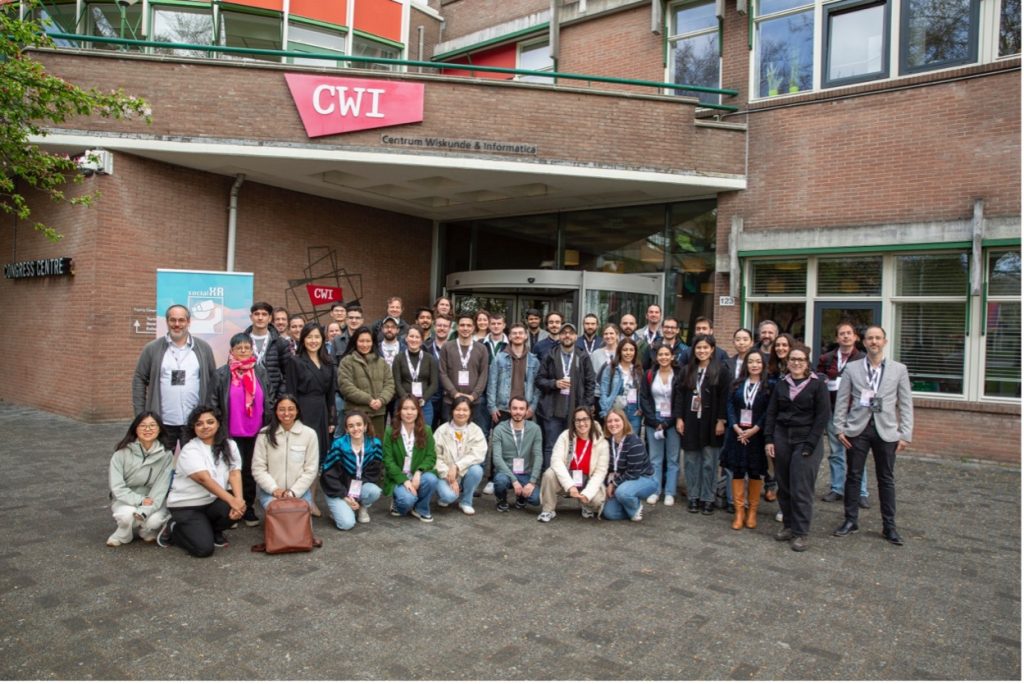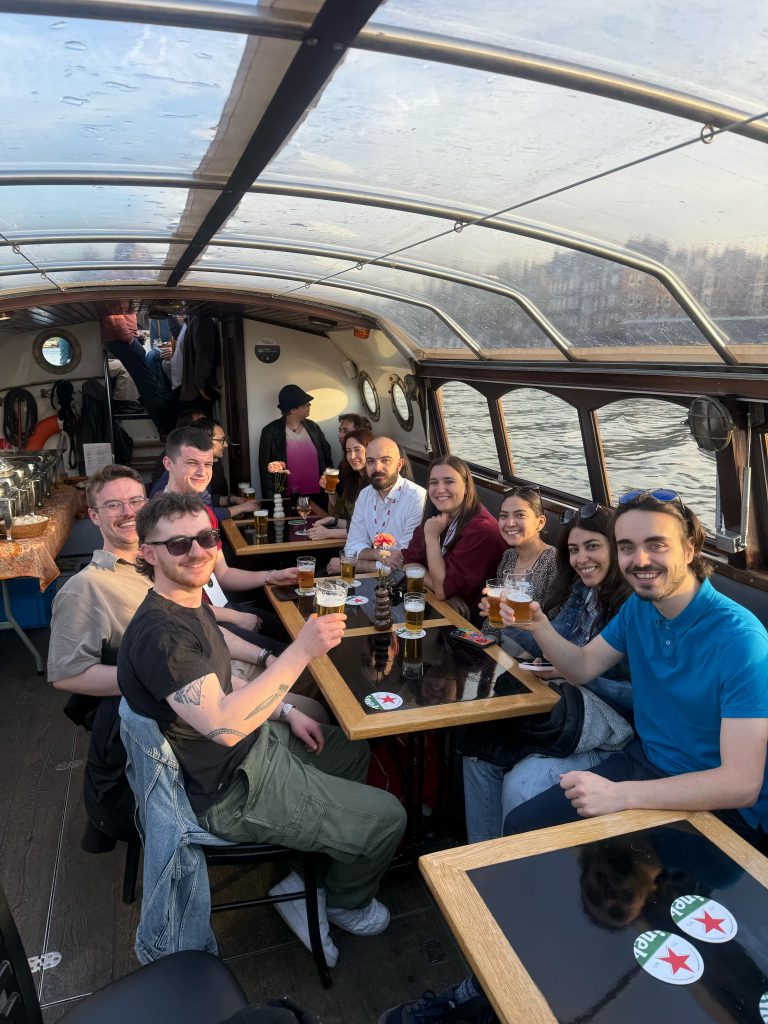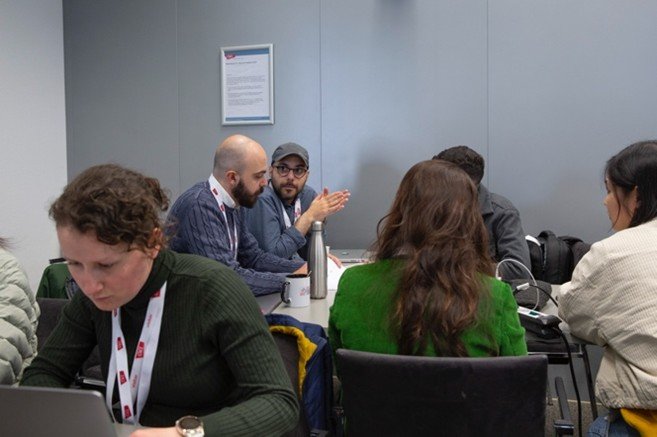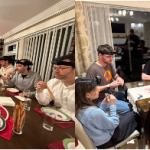
On April 10th, 2024, during the SIGMM Advisory Board meeting, the Strike Team Leaders, Touradj Ebrahimi, Arnold Smeulders, Miriam Redi and Xavier Alameda Pineda (represented by Marco Bertini) reported the results of their activity. They are summarized in the following in the form of recommendations that should be intended as guidelines and behavioral advice for our ongoing and future activity. SIGMM members in charge of SIGMM activities, SIGMM Conference leaders and particularly the organizers of the next ACMMM editions, are invited to adhere to these recommendations for their concerns, implement the items marked as mandatory and report to the SIGMM Advisory Board after the event.
All the SIGMM Strike Teams will remain in charge for two years starting January 1st, 2024 for reviews and updates.
The world is changing rapidly, and technology is driving these changes at an unprecedented pace. In this scenario, multimedia has become ubiquitous, providing new services to users, advanced modalities for information transmission, processing, and management, as well as innovative solutions for digital content understanding and production. The progress of Artificial Intelligence has fueled new opportunities and vitality in the field. New media formats, such as 3D, event data, and other sensory inputs, have become popular. Cutting-edge applications are constantly being developed and introduced.
SIGMM Strike Team on Industry Engagement
Team members: Touradj Ebrahimi (EPFL),Ali Begen (Ozyegin Univ), Balu Adsumilli (Google), Yong Rui (Lenovo) and ChangSheng Xu (Chinese Academy of Sciences)
Coordinator: Touradj Ebrahimi
The team provided recommendations for both ACMMM organizers and SIGMM Advisory Board. The recommendations addressed improving the presence of industry at ACMMM and other SIGMM Conferences/Workshops launching new in-cooperation initiatives and establishing stable bi- directional links.
- Organization of industry-focused events
- Suggested / Mandatory for ACMMM Organizers and SIGMM AB: Create industry-focused promotional materials like pamphlets/brochures for industry participation (sponsorship, exhibit, etc.) in the style of ICASSP 2024 and ICIP 2024
- Suggested for ACMMM Organizers: invite Keynote Speakers from industry, eventually with financial support of SIGMMM. Keynote talks should be similar to plenary talks but around specific application challenges.
- Suggested for ACMMM Organizers: organize Special Sessions and Workshops around specific applications of interest to companies and startups. Sessions should be coordinated by industry with eventual support from an experienced and confirmed scholar.
- Suggested for ACMMM Organizers: organize Hands-on Sessions led by industry to receive feedback on future products and services.
- Suggested for ACMMM Organizers: organize Panel Sessions led by industry and standardization committees on timely topics relevant to industry e.g. How companies cope with AI.
- Suggested for ACMMM Organizers: organize Tutorial sessions given by qualified people from industry and standardization committees at SIGMM-sponsored conferences/workshops
- Suggested for ACMMM Organizers: promote contributions mainly from the industry in theform of Industry Sessions to present companies and their products and services.
- Suggested for ACMMM Organizers and SIGMM AB: promote Joint SIGMM / Standardization workshop on latest standards e.g. JPEG meets SIGMM, MPEG meets SIGMM, AOM meets SIGMM.
- Suggested for ACMMM Organizers: organize Job Fairs like job interview speed dating during ACMMM
- Initiatives for linkage
- Mandatory for SIGMM Organizers and SIGMM AB: Create and maintain a mailing list of industrial targets, taking care of GDPR (Include a question in the registration form of SIGMM-sponsored conferences)
- Suggested for SIGMM AB: organize monthly talks by industry leaders either from large established or SMEs or startups sharing technical/scientific challenges they face and solutions
- Initiatives around reproducible results and benchmarking
- Suggested for ACMMM Organizers and SIGMM AB: support release of databases, studies on performance assessment procedures and metrics eventually focused on specific applications.
- Suggested for ACMMM Organizers: organize Grand Challenges initiated and sponsored by industry.
Strike Team on ACMMM Format
Team Members: Arnold Smeulders (Univ. of Amsterdam), Alan Smeaton (Dublin City University), Tat Seng Chua (National University of Singapore), Ralf Steinmetz (Univ. Darmstadt), Changwen Chen (Hong Kong Polytechnic Univ.), Nicu Sebe (Univ. of Trento), Marcel Worring (Univ. of Amsterdam), Jianfei Cai (Monash Univ.), Cathal Gurrin (Dublin City Univ.).
Coordinator: Arnold Smeulders
The team provided recommendations for both ACMMM organizers and SIGMM Advisory Board. The recommendations addressed distinct items related to Conference identity, Conference budget and Conference memory.
1. Intended audience. It is generally felt that ACMMM is under pressure from neighboring conferences growing very big. There is consensus that growing big should not be the purpose of ACMMM: a 750 – 1500 size was thought to be ideal including being attractive to industry. Growth should come naturally.
- Suggested for ACMMM Organizers and SIGMM AB: Promote distant travel by lowering fees for those who travels far
- Suggested for ACMMM Organizers: Include (a personalized) visa invitation in the call for papers.
2. Community feel, differentiation and interdisciplinarity. Identity is not an actionable concern, but one of the shared common goods is T-shaped individuals interested in neighboring disciplines making an interdisciplinary or multidisciplinary connection. It is desirable to differentiate submitted papers from major close conferences like CVPR. This point is already implemented in the call for papers of ACMMM 2024.
null- Mandatory for ACMMM Organizers: Ask in the submission how the paper fits in the multimedia community and its scientific tradition as illustrated by citations. Consider this information in the explicit review criteria.
- Recommended for ACMMM Organizers: Support the physical presence of participants by rebalancing fees.
- Suggested for ACMMM Organizers and SIGMM AB: Organize a session around the SIGMM test of time award, make selection early, funded by SIGMM.
- Suggested for ACMMM Organizers: Organize moderated discussion sessions for papers on the same theme.
3. Brave New Ideas. Brave New is very well fitting with the intended audience. It is essential that we are able to draw out brave and new ideas from our community for long term growth and vibrancy. The emphasis in reviewing Brave New Ideas should be on the novelty even if it is not perfect. Rotate over a pool of people to prevent lock-in.
null- Suggested / Mandatory for ACMMM Organizers: Include in the submission a 3-minute pitch video to archive in the ACM digital library.
- Suggested / Mandatory for ACMMM Organizers: Select reviewers from a pool of senior people to review novelty.
- Suggested for ACMMM Organizers: Start with one session of 4 papers, if successful, add another session later.
4. Application. There should be no support for one specific application area exclusively in the main conference. Yet, applications areas should be focused in special sessions or workshops.
- Suggested for ACMMM Organizers: Focus on application-related workshops or special sessions with own reviewing.
5. Presentation. When the core business of ACM MM is inter- and multi-disciplinarity it is natural to make the presentation for a broader audience part of the selection. ACM should make the short videos accessible as a service to the science or general public. TED-like videos for a paper fit naturally with ACMMM and fit with the trend in YouTube to communicate your paper. If too much to do, SIGMM AB should support reviewing the videos financially.
- Mandatory to ACMMM Organizers: Include a TED-like 3-minute pitch video as part of the submission and this is archived by ACM Digital Library as part of the conference proceedings, to be submitted a week after the paper deadline for review, so there is time to prepare it after the regular paper submission.
6. Promote open-access. For a data-driven and fair comparison promote open access of data to be used in the next conference to compare to.
- Suggested for SIGMM AB: Open access for data encouraged.
7. Keynotes. For the intended audience and interdisciplinary, it is felt essential to have keynote on the key-topics of the moment. Keynotes should not focus on one topic but maintaining the diversity of topics in the conference and over the years, so to be sure new ideas are inserted in the community.
- Suggested to SIGMM AB: to directly fund a big name, expensive, marquee keynote speaker sponsored by SIGMM to one of the societally urgent key-notes as evident from news.
8. Diversity over subdisciplines, etc Do extra effort for Arts, GenAI use models, security, HCI and demos. We need to ensure that if the submitted papers are of sufficiently high quality, there should be at least a session on that sub- topic in the conference. We need to ensure that the conference is not overwhelmed by a popular topic with easy review criteria and generally of much higher review scores.
- Suggested for ACMMM Organizers: Promote diversity of all relevant topics in the call for papers and by action in subcommunities by an ambassador. SIGMM will supervise the diversity.
9. Living report. To enhance the institutional memory, maintain a living document passed on from organizer to organizer, with suggestions. The owner of the document is the commissioner for conferences of SIG MM.
- Mandatory for ACMMM Organizers and SIGMM AB: A short report to the SIGMM commissioner for conferences from the ACMMM chair, including a few recommendations for the next time; handed over to the next conference after the end of the current conference.
SIGMM Strike Team on Harmonization and Spread
Team members: Miriam Redi (Wikimedia Foundation), Sivia Rossi (CWI), Irene Viola (CWI), Mylene Farias (Texas State Univ. and Univ. Brasilia), Ichiro Ide (Nagoya Univ), Pablo Cesar (CWI and TU Delft).
Coordinator: Miriam Redi
The team provided recommendations for both ACMMM organizers and SIGMM Advisory Board. The recommendations addressed distinct items related to give SIGMM Records and Social Media a more central role in SIGMM, integrate SIGMM Records and Social Media in the whole process of the ACMMM organization since its initial planning.
1. SIGMM Website The SIGMM Website is not updated and needs a serious overhaul.
- Mandatory for SIGMM AB: restart the website from scratch being inspired by other SIGs f.e. reaching out to people at CHI to understand what can be done. Budget should be provided by SIGMM.
2. SIGMM Social Media Channels SIGMM Social media accounts (twitter and linkedin) are managed by the Social Media Team at the SIGMM Records
- Suggested for SIGMM AB: continuing this organization expanding responsibilities of the team to include conferences and other events
3. Conference Social Media: Social media presence of conferences is managed by the individual conferences. It is not uniform and disconnected from SIGMM social media and the Records. The social media presence of ACMMM flagship conference is weak and needs help. Creating continuity in terms of strategy and processes across conference editions is key.
- Mandatory for ACMMM Organizers and SIGMM AB: create a Handbook of conference communications: a set of guidelines about how to create continuity across conference editions in terms of communications, and how to connect the SIGMM Records to the rest of the community.
- Suggested for ACMMM Organizers and SIGMM AB: one member of the Social Media team at the SIGMM Records is systematically invited to join the OC of major conferences as publicity co-chair. The steering committee chair of each conference should commit to keeping the organizers of each conference edition informed about this policy, and monitor its implementation throughout the years.
SIGMM Strike Team on Open Review
Team members: Xavier Alameda Pineda (Univ. Grenoble-Alpes), Marco Bertini (Univ. Firenze). Coordinator: Xavier Alameda Pineda
The team continued the support to ACMMM Conference organizers for the use of Open Review in the ACMMM reviewing process, helping to implement new functions or improve the existing ones and supporting smooth transfer of the best practices. The recommendations addressed distinct items to complete the migration and stabilize use of Open Review in the future ACMMM editions.
1. Technical development and support
- Mandatory for the Team: update and publish the scripts; complete the Open Review configuration.
- Mandatory for SIGMM AB and ACMMM organizers: create a Committee led by the TPC chairs of the current ACMM edition a rotating basis.
2. Communication
- Mandatory for the Team: write a small manual for use and include it in the future ACMMM Handbook.
Alberto Del Bimbo
SIGMM Chair









































